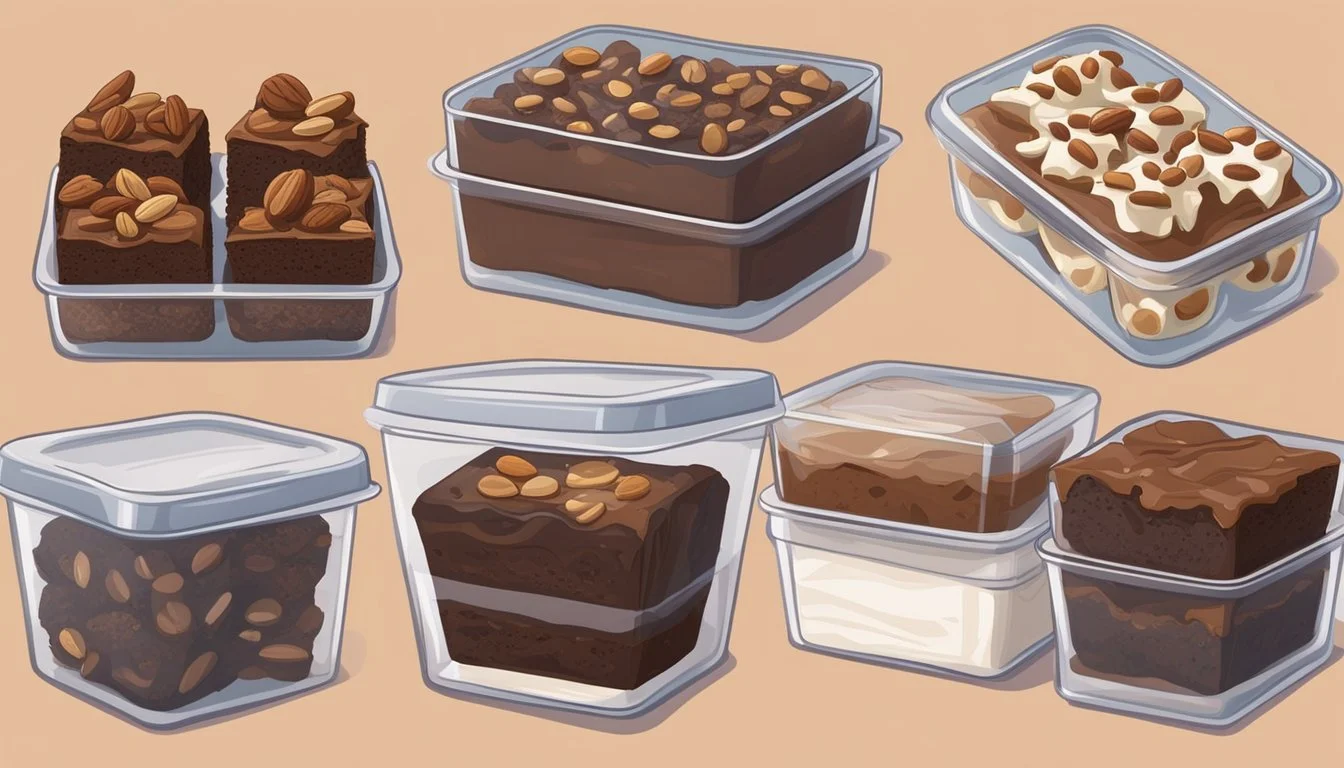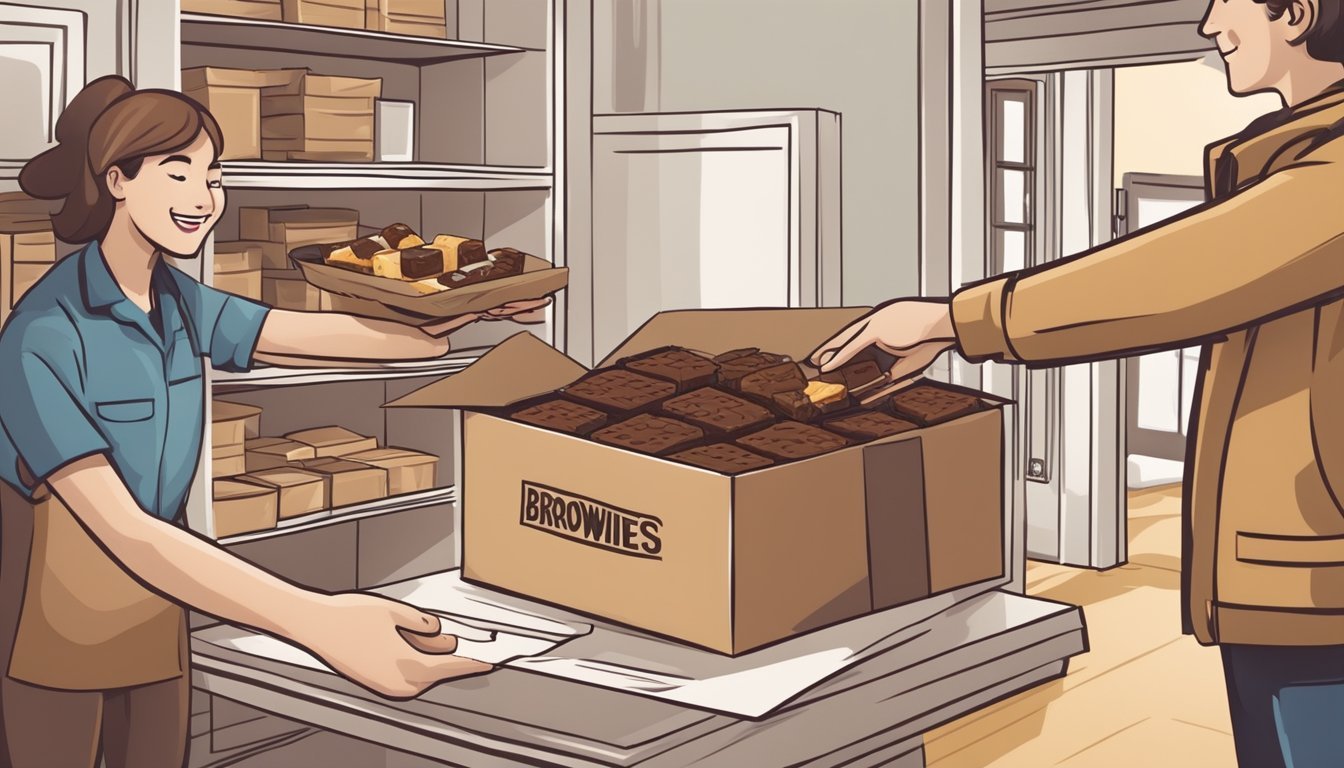Do Brownies Go Bad?
Shelf Life and Storage Tips
Brownies are a beloved treat that many enjoy, but an important question often arises: do brownies go bad? Yes, they do go bad, but not quite like fresh produce or dairy products. When brownies are not stored correctly, they can become dry, crumbly, and develop an off aroma, signaling that they are no longer at their best.
The shelf life of brownies can vary significantly depending on storage methods. At room temperature, they typically last a few days to a week. Storing them in the fridge can extend their life up to six months, though some prefer not to consume them after that long due to potential changes in taste and texture. For those looking to store brownies even longer, freezing is an option, with proper storage extending their quality for several months.
Understanding the signs of spoilage is crucial. Changes in texture and smell are key indicators that brownies are past their prime. A musty or sour odor is a clear sign that they should be discarded. By following proper storage tips, one can enjoy brownies at their best for an extended period.
Understanding Brownies
Brownies are a popular dessert known for their rich flavors and diverse textures. This section explores key ingredients and the different varieties available, providing insight into what makes brownies so beloved.
Key Ingredients in Brownies
Brownies typically consist of chocolate, sugar, flour, eggs, and butter.
Chocolate gives brownies their classic taste and can range from cocoa powder to melted chocolate, impacting the end result's richness.
Sugar adds sweetness and helps create a moist texture. The amount of sugar can influence whether the brownie is more fudgy or cake-like.
Flour provides structure. Using more or less can result in a denser or lighter texture, respectively.
Eggs act as a binding agent, ensuring the ingredients are well combined. They also contribute to the chewy texture.
Butter brings a rich flavor and adds to the moistness. Sometimes, vegan brownies substitute butter with plant-based oils.
Optional add-ins like nuts (such as walnuts) or baking powder for leavening may be used to modify texture and taste.
Varieties of Brownies
Brownies come in many forms, each with unique characteristics.
Fudgy Brownies are dense and gooey, with a higher fat-to-flour ratio. They often remain moist even after baking.
Cake-like Brownies have a lighter, airy texture due to the inclusion of baking powder and a higher flour content.
Cheesecake Brownies feature a cream cheese layer swirled into the batter, combining tangy and rich flavors.
Vegan Brownies use substitutes for eggs and butter, such as flax seeds, applesauce, or coconut oil, catering to those on a plant-based diet.
Whether homemade or store-bought, each variety offers a unique taste experience, appealing to different preferences.
Shelf Life of Brownies
Brownies, whether homemade or store-bought, have a specific shelf life that can be influenced by several factors. These include the presence of preservatives, storage conditions, and the ingredients used.
Factors Affecting Freshness
Ingredients and Preservatives
The shelf life of brownies largely depends on the ingredients. Homemade brownies typically last for 3-4 days at room temperature due to the lack of preservatives. Store-bought brownies can last longer, often up to two weeks, because they often include preservatives that extend freshness.
Storage Conditions
Proper storage conditions are essential. Brownies kept at room temperature should be stored in an airtight container. If refrigerated, they can last up to a week, although this might affect texture. For longer storage, brownies can be frozen for up to 6 months. Wrapping them in cling wrap followed by aluminum foil can help maintain quality.
Environmental Factors
The environment plays a crucial role in freshness. Humidity can make brownies spoil faster. A cool, dry location is preferable for storing leftover brownies. Use labels with the date of storage to keep track of their shelf life and ensure they are consumed before spoiling.
By understanding these factors, one can maximize the freshness and quality of brownies, whether for a special occasion or just to enjoy later.
Does Chocolate Matter?
Chocolate plays a significant role in determining how long brownies stay fresh and how their flavor and texture evolve over time.
Impact of Chocolate on Perishability
The type and quality of chocolate used in brownies can affect their shelf life. Higher cocoa content, such as in dark chocolate, tends to have less moisture, potentially extending the time brownies remain fresh. On the other hand, milk and white chocolates contain more dairy, which can lead to quicker spoilage.
Including dairy-based fillings or chocolate pieces within the brownie mix can also impact perishability. For instance, brownies with chocolate ganache or creamy fillings may need refrigeration due to their higher dairy content, impacting how long they stay good at room temperature.
Chocolatey flavors often mask the early signs of spoilage, such as slight changes in taste or smell. Therefore, regularly checking brownies for texture and aroma changes is essential. A noticeable sour or musty smell indicates they should be discarded.
How to Tell if Brownies Have Gone Bad
Identifying spoiled brownies involves checking their appearance, texture, and smell. Consuming bad brownies can lead to foodborne illnesses.
Visual and Taste Indicators
Brownies that have gone bad often exhibit several visual cues. Mold is a common sign; any green, white, or black spots on the brownies should prompt immediate disposal. Changes in appearance, such as a dull or faded color, can also indicate spoilage.
Texture is another telltale sign. A fresh brownie is typically soft and moist, but a spoiled one may become excessively hard, dry, or crumbly. Conducting a taste test is not recommended if there are noticeable visual changes or off-putting odors, as it may pose a risk of food poisoning.
Health Implications of Spoiled Brownies
Consuming brownies that have gone bad can lead to food poisoning or other foodborne illnesses. Symptoms may include nausea, vomiting, diarrhea, and stomach cramps.
The presence of mold is particularly concerning as it can contain mycotoxins, which are harmful to health. Even if the brownies look fine, a sour or off-putting scent is a clear indicator that they should not be consumed.
Brownies made with perishable ingredients like dairy are especially prone to spoilage and should be handled and stored with care to avoid health risks. Regularly checking for signs of spoilage can prevent unwanted health issues.
Proper Storage Techniques
Proper storage techniques are crucial to maintaining the freshness and quality of brownies. From home storage solutions to extending their lifespan through freezing, these methods ensure your dessert stays enjoyable.
At Home Storage Solutions
To keep brownies fresh at home, store them in an airtight container. This prevents exposure to air, which can dry them out. Use plastic wrap or aluminum foil to cover the brownies before placing them in the container for an extra layer of protection.
Cling wrap can also be used directly on the surface of cut brownies to minimize air contact. Options for storage locations include the pantry or counter, given the low humidity and stable temperature, though these methods typically keep brownies fresh for about 4-5 days.
For a longer shelf life, consider refrigeration. Place the brownies in an airtight container and store them in the fridge. This can extend their freshness for up to a week while preserving texture and flavor.
Extending Freshness Through Freezing
Freezing brownies is an excellent way to extend their freshness for several months. Start by wrapping each brownie individually in plastic wrap. This prevents ice crystals from forming and keeps them airtight.
Next, place the wrapped brownies in a freezer-safe airtight container or heavy-duty ziplock bag. This additional layer helps prevent freezer burn and maintain the texture.
When ready to enjoy, thaw the brownies at room temperature. For a quicker option, thaw them in the microwave using a defrost setting. Freezing and proper thawing techniques ensure that brownies maintain their rich, fudgy texture and flavor, making your dessert last as long as possible.
Step-by-Step Guide to Freezing Brownies
To properly freeze brownies and maintain their texture and taste, it is essential to focus on wrapping and packaging them correctly and knowing the best practices for thawing.
Wrapping and Packaging for the Freezer
Start by allowing the brownies to cool completely after baking, typically for about 30 minutes on the countertop. Once cooled, cut the brownies into individual portions to make them easier to thaw and serve later.
Wrap each brownie piece tightly in plastic wrap or cling wrap. Make sure there are no air pockets, as trapped air can lead to freezer burn. After wrapping, place the brownies in a single layer in an airtight container or wrap them in aluminum foil for extra protection.
Label the container or packaging with the date, so you know when the brownies were frozen. Place the container in the freezer, where the brownies can be stored for up to three months while maintaining their quality.
Thawing Frozen Brownies
To thaw frozen brownies, remove the desired number of brownies from the freezer. Unwrap them and place them on a plate or in a bowl at room temperature. Allow the brownies to thaw for about one to two hours.
For a faster option, you can use the microwave. Set the microwave to the defrost setting and heat the brownies in short intervals, checking frequently to ensure they don’t overheat or become too soft.
Once thawed, the brownies should retain their original texture and taste, making them ready to enjoy as if they were freshly baked.
Tips for Storing Different Brownie Types
Proper storage is essential for preserving the texture and flavor of various brownie types. Different storage methods are recommended based on whether your brownies are moist or dry, and whether they are frosted or plain.
Moist vs. Dry Brownies
Moist brownies, such as fudgy or chocolatey recipes, need to be kept in an airtight container to retain their softness. They should be stored at room temperature for up to 3 days. For longer storage, refrigerate them for up to a week, ensuring they are well-wrapped.
Dry brownies, including those with a cake-like texture, can be left at room temperature for a longer period without losing their quality. An airtight container is still recommended to prevent them from becoming stale.
Storing Frosted vs. Plain Brownies
Frosted brownies require careful handling to maintain the integrity of the frosting. Store them in a single layer in an airtight container. Use parchment paper between layers if stacking is necessary, and refrigerate to keep the frosting firm.
Plain brownies are more versatile in terms of storage. They can be kept in an airtight container at room temperature or frozen for longer preservation. To freeze plain brownies, wrap each piece in plastic wrap and place them in a freezer-safe bag or container. This method can extend their shelf life up to 3 months.
Purchasing and Storing Brownies from Online Sellers
When purchasing brownies from online sellers, there are important factors to consider to ensure freshness and safety. Key elements include selecting reputable vendors and knowing how to store brownies upon delivery.
Considerations for Online Bakery Orders
When ordering brownies from an online bakery, verify the reputation of the seller. Look for reviews that mention freshness, flavor, and delivery times. Some online sellers provide detailed descriptions of the ingredients and packaging methods.
Check the shipping options. Expedited shipping is often recommended to minimize the time the brownies spend in transit, reducing the chance of spoilage. Also, opt for sellers who offer temperature-controlled shipping to maintain the quality of the brownies.
Another aspect to consider is the packaging. Vendors should use sealed and insulated packaging to protect the brownies during shipment. This helps ensure that the brownies arrive in the best condition possible.
Preserving Freshness Upon Delivery
Upon receiving the delivery, inspect the packaging for any damage. Ensure that the brownies are sealed and that the package has been kept cool during transit. Brownies should be promptly stored to maintain freshness.
For short-term storage, keep the brownies in an airtight container at room temperature. This helps maintain their moisture and flavor for up to four days. Storing them in the refrigerator can extend their shelf life to about a week.
For long-term storage, brownies can be frozen. Place them in a freezer-safe container or wrap them individually in plastic wrap and aluminum foil. This can extend their lifespan to two to three months. Always label containers with the date of storage.
By following these steps, you can enjoy fresh and safe brownies ordered from online sellers.







